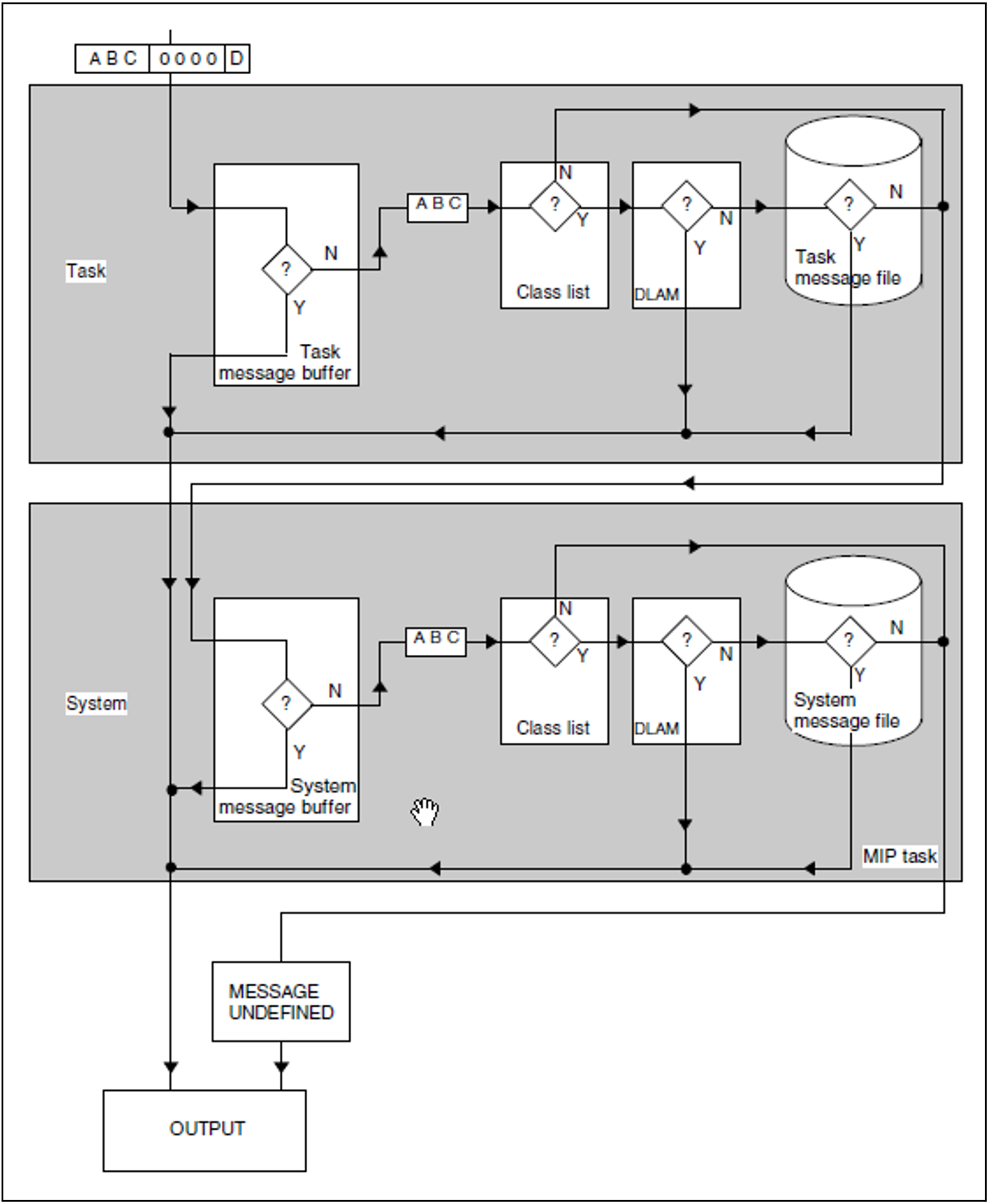The message search begins in the task-specific memory area; the search criteria are the message code and the language identifier specified in the macro. If the search is not successful in the task area, it continues at system level. If the message with the specified message code and language identifier is still not found, the message search is first continued with the language set for the task, then with the first language set for the system and finally with the second language. If the search is unsuccessful, the message MESSAGE UNDEFINED is issued.
This process is outlined in figure 23, although not all details mentioned in the description are shown.
Message search at task level
At task level, the search begins in the task-specific message buffer in which the messages last output are stored. If the requested message is stored there, it is edited and output.If this is not the case, the class list is checked as to whether it contains the specified message class. For each message class known to the task, the class list contains the names of the corresponding message files. Messages that are output particularly frequently are specified in the message file with DLAM access. They are transferred to the task DLAM area with the task at the time of linking the message file. If the message class exists, the next step is to search the message file for the message code and the language identifier.Once the message has been found, the task-specific message buffer is updated with the “message framework”, the “message framework” is supplemented by the current inserts transferred by the macro MSG7/MSG7X, and the message is output.
Message search at system level
If the message is not found in any task-specific message file, the search is continued at system level in the system message buffer. If there is still no message that matches the specifications, the MIP task is called to continue the message search in the system message files. Here, too, in the same way at the task level, the DLAM area is checked first before the message files are searched.
Overview:
Figure 23: Message search in BS2000

